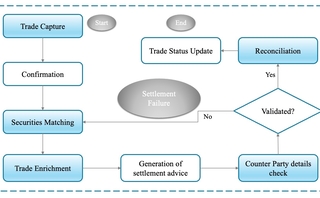Amazon bullish on AWS growth, signals more investment in generative AI
Tech giant’s cloud computing arm grew customer base in Q2 despite cost-cutting among users

In its second-quarter earnings, Amazon recorded 12% year-on-year revenue growth to $22.1 billion for Amazon Web Services, its cloud computing arm. The business managed to add new customers and workloads despite seeing some users focus on cost-cutting due to the uncertain economic landscape.
Andy Jassy, CEO of Amazon, said it’s not easy to record double-digit growth on a business with an $88 billion revenue run rate.
“To still grow double digits on a base that size means that we’re acquiring a lot of new customers and a lot of new workloads. And so, I’m very bullish on the growth of AWS over the next several years,” he said during the firm’s earnings call on August 3.
The AWS business represented roughly 16.5% of Amazon’s overall $134.4 billion revenue for the quarter.
During the quarter, Jassy noted that while customers’ cost-saving measures are ongoing, they are tapering off. And while AWS’s growth was mainly due to the addition of new customers and workloads, increasing interest in generative AI will help support future growth, he said.
This growth also comes at a time when Big Tech firms are becoming more entrenched in the capital markets. While they may have started off as infrastructure and cloud providers to capital markets firms, the likes of AWS, Google, and Microsoft have the ammunition in the form of resources and technical capabilities to expand well beyond those use-cases.
Those capabilities are the foundation of the several recent partnerships, particularly among exchanges and Big Tech, including Nasdaq and AWS, CME Group and Google, London Stock Exchange Group and Microsoft, and a few others. The billion-dollar, multi-year deals enable exchanges to potentially create new revenue sources, and some of these partnerships, though new, have already yielded results.
“It’s important to remember that we’re in the very early days of adoption and success of generative AI, and the consumer applications are only one layer of the opportunity,” Jassy added.
As Amazon sees it, large language models (LLMs) and generative AI consist of three layers.
At the lowest layer, according to Jassy, is the compute required to train foundational models and make inferences or predictions. For this, Amazon built custom AI chips to train and run models—Trainium and Inferentia—now on their second versions.
The middle layer is LLM-as-a-Service, since developing LLMs can take billions of dollars and multiple years of work. Most companies don’t want to devote such huge resources themselves, said Jassy. Instead they want to access and customize existing LLMs and build generative AI applications using their proprietary data on secure and enterprise-grade platforms.
Currently, through its Bedrock platform, AWS provides access to foundational models through an API. Users can then connect their data to these models without needing to train it. Bedrock was announced in April this year, along with Amazon’s own foundational LLM, Titan. Other models from AI startups are also available, including those from Anthropic, Stability Diffusion, and AI21 Labs.
During the AWS Summit in New York on July 26, Swami Sivasubramanian, vice-president of databases, analytics, and machine learning at AWS, announced expansions to its library with the addition of Stability Diffusion’s SDXL 1.0. and Anthropic’s Claude 2.0.
“There is currently no model to rule them all. It’s about choosing the right model for the job,” he said. “Then customers need the ability to securely customize these models with their data, and then they need easy-to-use tools to democratize generative AI within their organizations and improve employee productivity.” US-based hedge fund Bridgewater Associates is one current AWS client utilizing Bedrock to build generative AI products.
The third layer, Jassy said, comprises the actual applications that run on top of the LLMs, of which ChatGPT is an example. He added that one of the early compelling generative AI applications is as a coding companion. AWS offers this capability through its CodeWhisperer tool, which uses foundational models to boost coding productivity by offering suggestions based on natural language feedback.
At the AWS Summit, Sivasubramanian said the firm’s internal studies found the tool increased productivity. “During preview, we ran a productivity challenge that showed that participants who use CodeWhisperer were 27% more likely to complete the task successfully, and they did it 57% faster on average.”
AWS’s Glue Studio, an interface for ‘extract, transform, and load’ jobs that can be used for data transformation workflows, now supports CodeWhisperer. A command can be written in the Glue Studio notebook and CodeWhisperer will recommend a number of code snippets with the option to accept the suggestion, view additional ones, or continue writing the code.
In June, AWS announced its Generative AI Innovation Center. The firm is investing $100 million in the program, which will connect its AI and machine learning experts with customers to help them design and launch new generative AI products, services, and processes.
Amazon isn’t even close to being alone in the generative AI game. IBM recently launched a Center of Excellence for generative AI, staffed by more than 1,000 specialists in the field, to help firms capitalize on the opportunities it offers.
Meanwhile, other Big Tech behemoths, including Microsoft and Google, recently affirmed their commitment to developing generative AI capabilities.
“When you’re talking about the big potential explosion in generative AI, which everybody is excited about—including us—I think we’re in the very early stages. We are a few steps into a marathon, in my opinion. I think it’s going to be transformative, but it’s really early, and most companies are still figuring out how they want to approach it,” Jassy said.
Further reading
Only users who have a paid subscription or are part of a corporate subscription are able to print or copy content.
To access these options, along with all other subscription benefits, please contact info@waterstechnology.com or view our subscription options here: http://subscriptions.waterstechnology.com/subscribe
You are currently unable to print this content. Please contact info@waterstechnology.com to find out more.
You are currently unable to copy this content. Please contact info@waterstechnology.com to find out more.
Copyright Infopro Digital Limited. All rights reserved.
You may share this content using our article tools. Printing this content is for the sole use of the Authorised User (named subscriber), as outlined in our terms and conditions - https://www.infopro-insight.com/terms-conditions/insight-subscriptions/
If you would like to purchase additional rights please email info@waterstechnology.com
Copyright Infopro Digital Limited. All rights reserved.
You may share this content using our article tools. Copying this content is for the sole use of the Authorised User (named subscriber), as outlined in our terms and conditions - https://www.infopro-insight.com/terms-conditions/insight-subscriptions/
If you would like to purchase additional rights please email info@waterstechnology.com
More on Emerging Technologies
Quants look to language models to predict market impact
Oxford-Man Institute says LLM-type engine that ‘reads’ order-book messages could help improve execution
The IMD Wrap: Talkin’ ’bout my generation
As a Gen-Xer, Max tells GenAI to get off his lawn—after it's mowed it, watered it and trimmed the shrubs so he can sit back and enjoy it.
This Week: Delta Capita/SSimple, BNY Mellon, DTCC, Broadridge, and more
A summary of the latest financial technology news.
Waters Wavelength Podcast: The issue with corporate actions
Yogita Mehta from SIX joins to discuss the biggest challenges firms face when dealing with corporate actions.
JP Morgan pulls plug on deep learning model for FX algos
The bank has turned to less complex models that are easier to explain to clients.
LSEG-Microsoft products on track for 2024 release
The exchange’s to-do list includes embedding its data, analytics, and workflows in the Microsoft Teams and productivity suite.
Data catalog competition heats up as spending cools
Data catalogs represent a big step toward a shopping experience in the style of Amazon.com or iTunes for market data management and procurement. Here, we take a look at the key players in this space, old and new.
Harnessing generative AI to address security settlement challenges
A new paper from IBM researchers explores settlement challenges and looks at how generative AI can, among other things, identify the underlying cause of an issue and rectify the errors.







